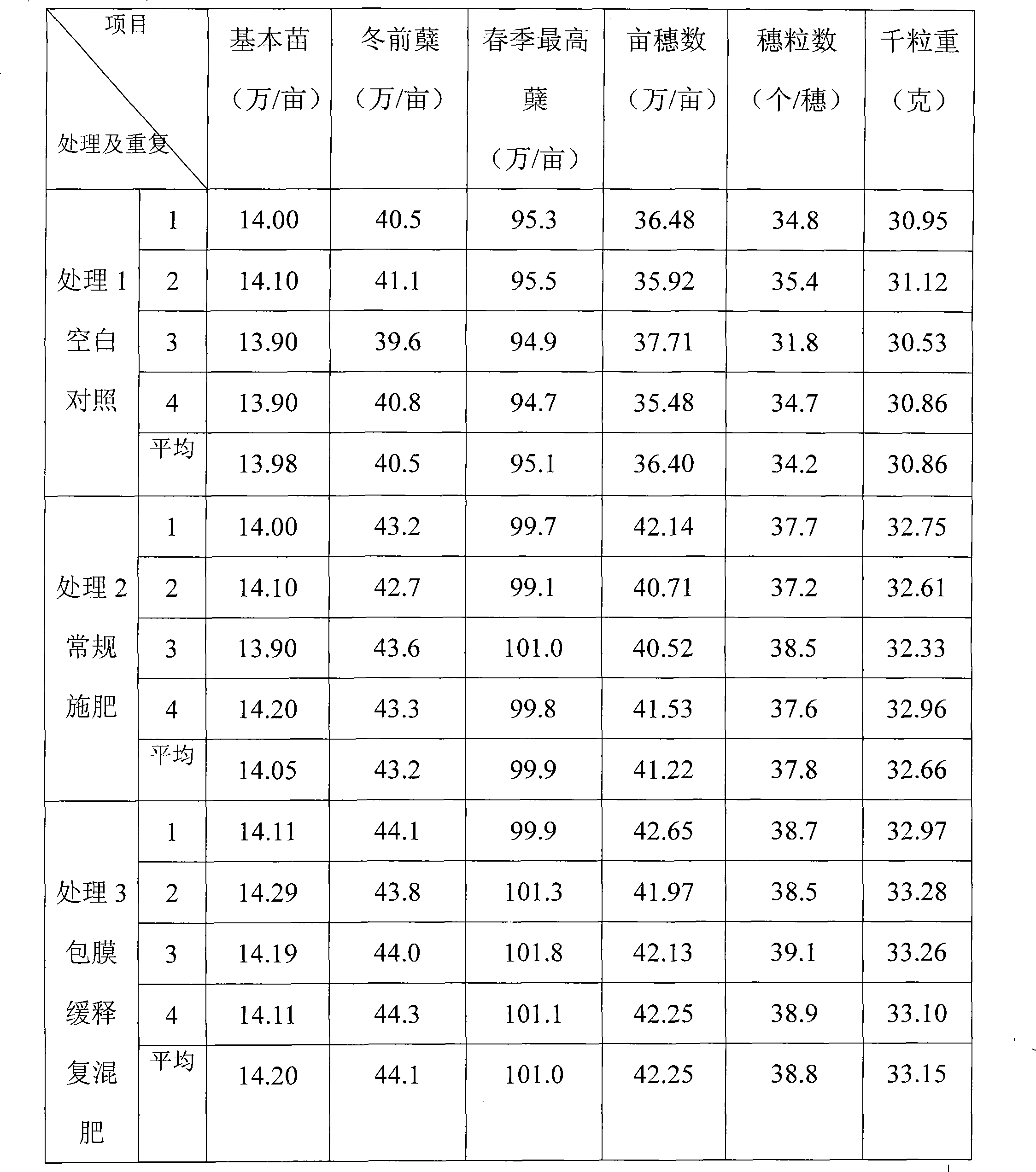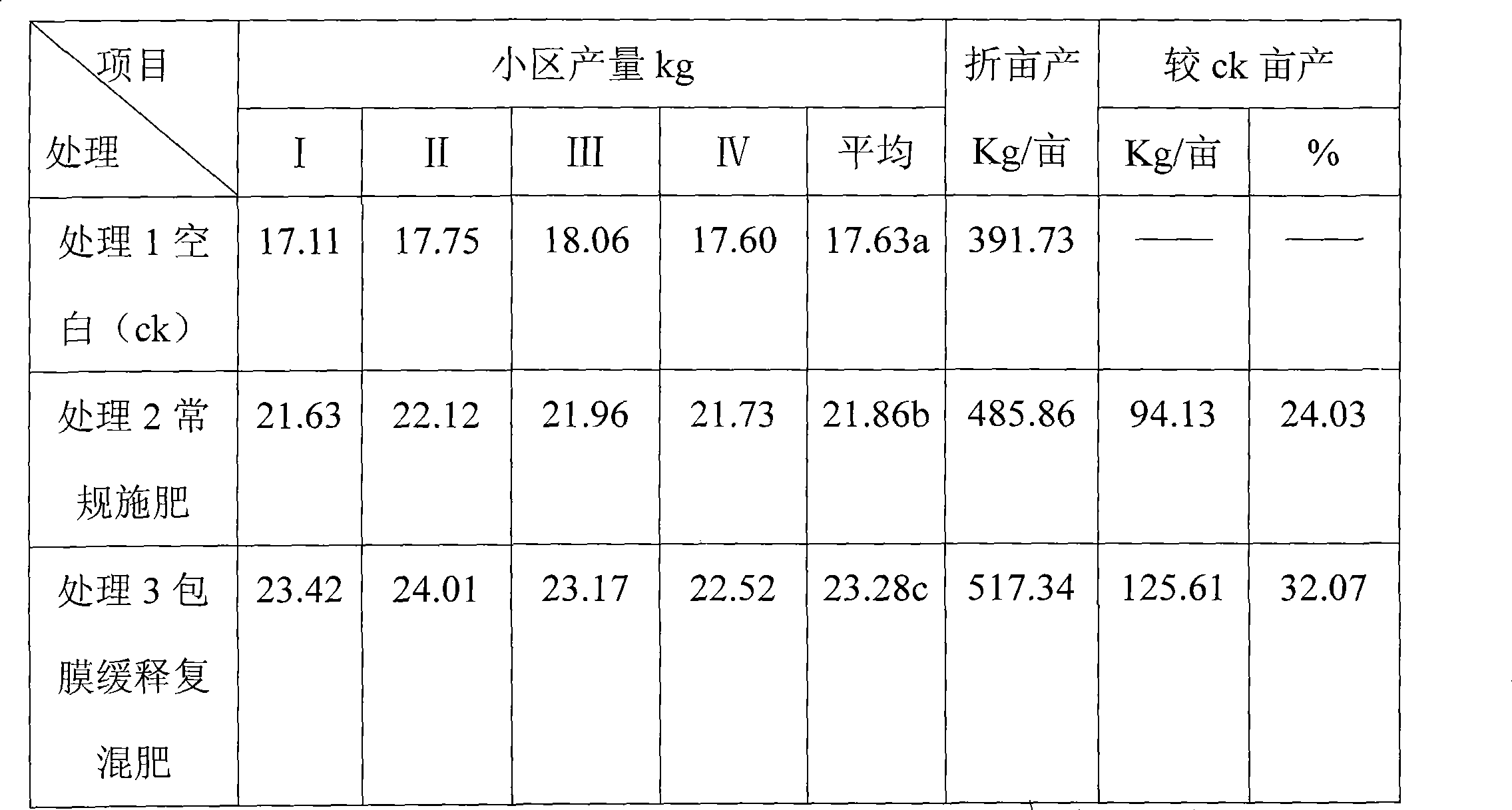Preparation of fertilizer coating sustained-release agent
A fertilizer coating and slow-release agent technology, which is applied in fertilizer mixtures, fertilization devices, applications, etc., can solve the problems of low cost, and achieve the effects of low cost, simple preparation process, and good ecological environment safety performance
- Summary
- Abstract
- Description
- Claims
- Application Information
AI Technical Summary
Problems solved by technology
Method used
Image
Examples
Embodiment 1
[0019] The preparation process is as follows:
[0020] 1) Add 1 ton of industrial purified water to the reactor, heat it to 94°C, add polyvinyl alcohol with a water quality of 9%, stir for 1.5 hours until the polyvinyl alcohol is dissolved to obtain a polyvinyl alcohol solution; then cool down to 80°C ;Dilute concentrated hydrochloric acid with a mass concentration of 30% into a dilute hydrochloric acid solution with water according to a volume ratio of 1:1, and add a dilute hydrochloric acid solution with a mass of 1% polyvinyl alcohol solution to the reaction kettle to adjust the pH value to 3;
[0021] 2), add 4% of the water quality used in step 1) to the reaction kettle, and the formaldehyde solution with a content of 37%, keep the temperature at 80°C, stir and react for 30 minutes; add 1% of the polyvinyl alcohol solution to a mass concentration of 25% ammonia solution to adjust the pH value to 7, add 2% urea of the water mass used in step 1) to react for 20 minutes, s...
Embodiment 2
[0025] 1) Add 1 ton of industrial purified water to the reactor, heat it to 98°C, add polyvinyl alcohol with a water quality of 11%, stir for 2 hours until the polyvinyl alcohol dissolves to obtain a polyvinyl alcohol solution; then cool down to 85°C; Dilute concentrated hydrochloric acid with a mass concentration of 30% into a dilute hydrochloric acid solution with water at a volume ratio of 1:1, and add a dilute hydrochloric acid solution with a mass concentration of 2% polyvinyl alcohol solution into the reaction kettle to adjust the pH value to 2;
[0026] 2), add 7% of the water quality used in step 1) to the reaction kettle, and the formaldehyde solution with a content of 37%, keep the temperature at 85°C, stir and react for 35 minutes; add 2% of the polyvinyl alcohol solution to a mass concentration of 25% ammonia solution to adjust the pH value to 8, add urea with 4% water mass used in step 1) to react for 30 minutes, so that urea reacts with excess formaldehyde;
[00...
Embodiment 3
[0029] 1) Add 1 ton of industrial purified water to the reactor, heat it to 96°C, add polyvinyl alcohol with 10% water quality, stir for 1.8 hours until the polyvinyl alcohol is dissolved to obtain a polyvinyl alcohol solution; then cool down to 83°C ; Dilute concentrated hydrochloric acid with a mass concentration of 30% into a dilute hydrochloric acid solution with water according to a volume ratio of 1:1, and add a dilute hydrochloric acid solution with a mass of 1.5% polyvinyl alcohol solution to the reaction kettle to adjust the pH value to 2.5;
[0030] 2), add 5.5% of the water quality used in step 1) to the reaction kettle, and the formaldehyde solution with a content of 37%, keep the temperature at 85°C, stir and react for 33 minutes; add 1.5% of the polyvinyl alcohol solution with a mass concentration of 25% ammonia solution to adjust the pH value to 7.5, add urea with 3% water mass used in step 1) to react for 25 minutes, so that urea reacts with excess formaldehyde;...
PUM
 Login to View More
Login to View More Abstract
Description
Claims
Application Information
 Login to View More
Login to View More - R&D
- Intellectual Property
- Life Sciences
- Materials
- Tech Scout
- Unparalleled Data Quality
- Higher Quality Content
- 60% Fewer Hallucinations
Browse by: Latest US Patents, China's latest patents, Technical Efficacy Thesaurus, Application Domain, Technology Topic, Popular Technical Reports.
© 2025 PatSnap. All rights reserved.Legal|Privacy policy|Modern Slavery Act Transparency Statement|Sitemap|About US| Contact US: help@patsnap.com



